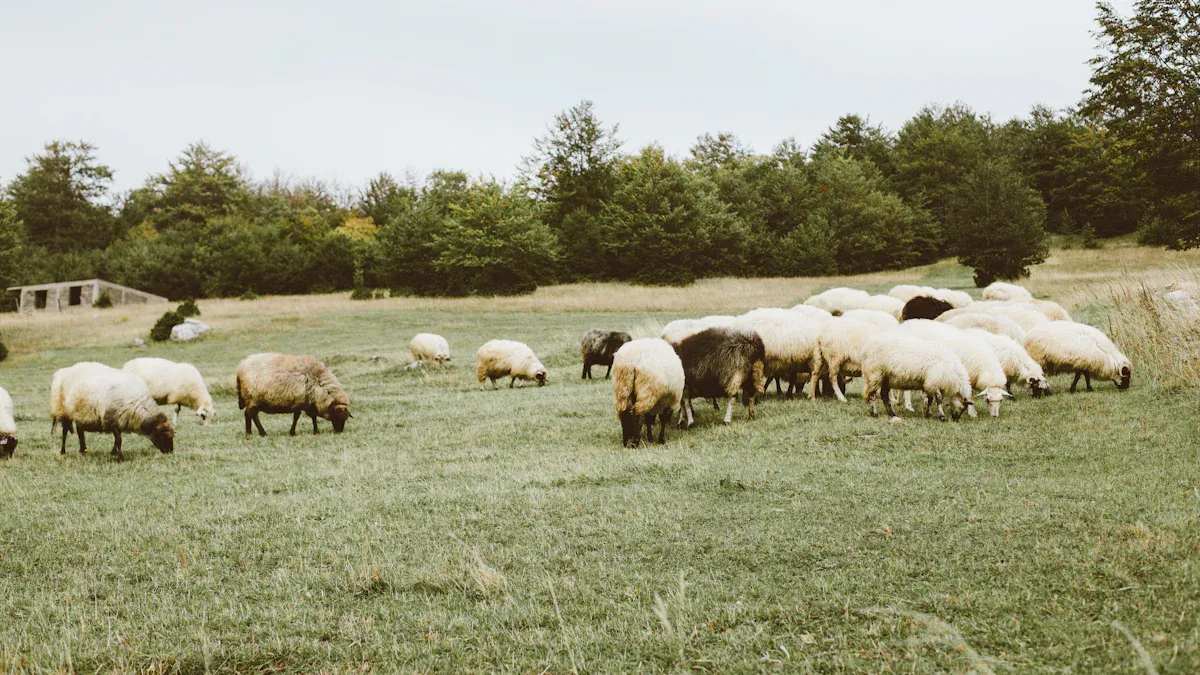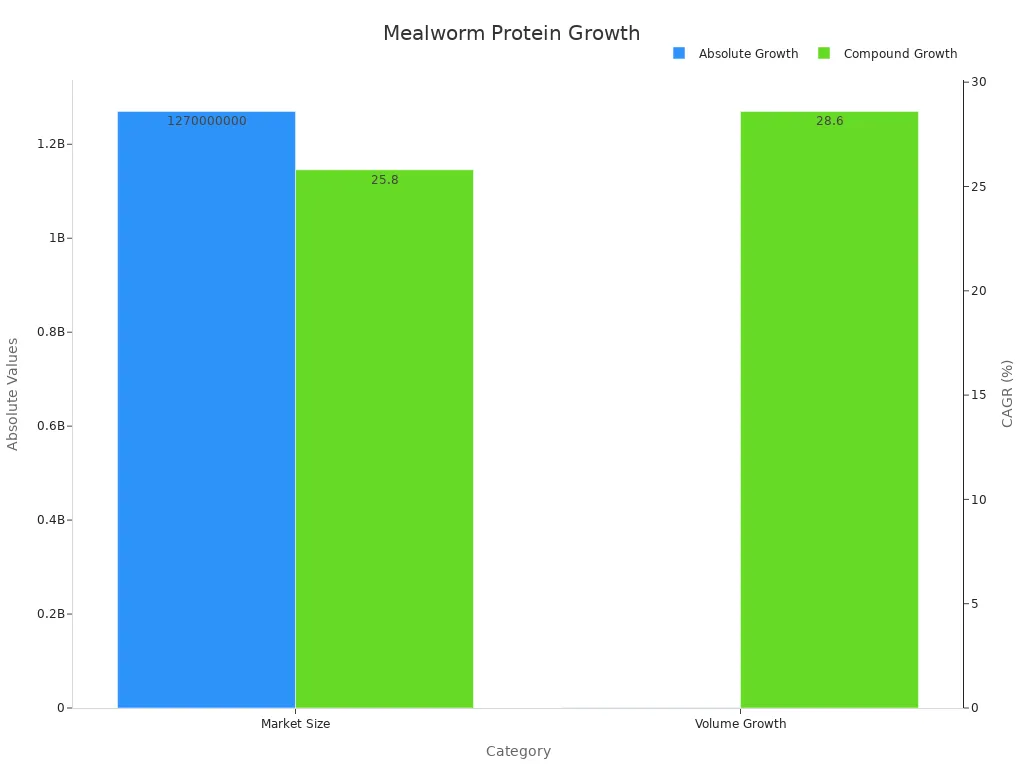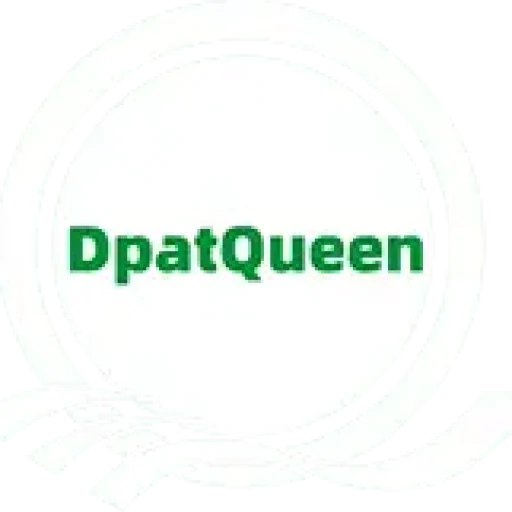
Sustainable protein sources are beco
ming essential as the global population approaches 10 billion by 2050. Traditional farming struggles with land use, water scarcity, and emissions, but mealworms offer a smarter solution. They require less space and water while producing fewer greenhouse gases. For Eastern Europe, mealworms for agriculture feed can reduce food waste and boost sustainability.
Key Takeaways
- Mealworms are a green protein option, using less land and water.
- Adding mealworms to animal feed helps animals grow healthier and faster.
- Using mealworms lowers feed costs and helps the environment and climate.
Nutritional and Environmental Advantages of Mealworms for Agriculture Feed
High Protein Content and Essential Nutrients
Did you know that mealworms are packed with nutrients that make them a powerhouse for agriculture feed? Their larvae contain about 51% protein, which is comparable to traditional protein sources like soy or fishmeal. Along with protein, mealworms offer essential nutrients such as calcium, iron, and manganese. These minerals are vital for livestock health, ensuring stronger bones, better immunity, and improved productivity.
What’s even more impressive is their ability to thrive on organic sidestreams like unsold vegetables or potato cuttings. This not only boosts their nutritional profile but also helps reduce food waste. For example, mealworms fed with potato cuttings show higher fat content and increased fatty acids, making them an even richer feed option.
Reduced Environmental Footprint Compared to Traditional Feed
Switching to mealworms for agriculture feed can significantly lower your environmental impact. Traditional livestock feed production often leads to deforestation and high greenhouse gas emissions. In contrast, mealworms require just 1.7 kg of feed to produce 1 kg of biomass, while conventional livestock may need up to 8 kg.
Studies also show that mealworms emit only 1% of the greenhouse gases produced by pigs and far less than ruminants like cows. Plus, they use less water and land, making them a sustainable choice for eco-conscious farmers.
Contribution to Sustainable Agricultural Practices
By incorporating mealworms into your feed strategy, you’re not just improving livestock health—you’re also supporting sustainable agriculture. Mealworms align perfectly with global efforts to reduce the environmental footprint of farming. They help mitigate issues like water scarcity, land degradation, and excessive emissions.
In Eastern Europe, where sustainability and climate goals are becoming a priority, mealworms offer a practical solution. They’re a step toward a future where agriculture is both productive and environmentally friendly.
Key Benefits for Eastern European Agriculture
Cost-Effective Alternative to Conventional Feed Sources
Feeding livestock doesn’t have to break the bank. Mealworms for agriculture feed offer a budget-friendly solution compared to traditional options like soy or fishmeal. You can produce mealworms locally using organic waste, which cuts down on transportation costs and reliance on imported feed.
Tip: If you’re looking to save money while improving feed quality, mealworms are a smart choice. They’re efficient to grow and require fewer resources, making them a win-win for your wallet and the environment.
Farmers in Eastern Europe are already seeing the financial benefits. By switching to mealworms, they’ve reduced feed expenses and improved profitability. It’s a practical way to keep costs low while maintaining high-quality nutrition for livestock.
Improved Livestock Health and Productivity
Healthy animals mean better yields. Mealworms are packed with protein and essential nutrients that boost livestock health. When you include them in your feed, you’ll notice stronger immunity, faster growth rates, and higher productivity.
For example, chickens fed with mealworm-based feed lay more eggs and show better overall health. The same goes for pigs and fish, which thrive on the nutrient-rich profile of mealworms. You’ll see the difference in your livestock’s performance, and that translates to better returns for your farm.
Alignment with Regional Sustainability and Climate Goals
Eastern Europe is stepping up its sustainability game, and mealworms fit right into the picture. They’re eco-friendly, requiring less land, water, and energy to produce. By using mealworms for agriculture feed, you’re contributing to regional efforts to combat climate change and promote sustainable farming.
Note: Mealworms align with the European Union’s Green Deal goals, making them a forward-thinking choice for farmers who want to stay ahead of the curve.
Switching to mealworms isn’t just good for your farm—it’s good for the planet. You’ll be part of a movement that prioritizes environmental health while ensuring food security for future generations.
Market Trends in Mealworm Protein Exports
Rising Demand for Alternative Proteins Globally
The world is shifting toward alternative proteins, and mealworms are leading the charge. Why? People care more about health and the environment than ever before. Mealworms require fewer resources like land and water compared to traditional livestock. This makes them a sustainable choice for eco-conscious consumers.
The demand for insect protein is growing fast. From 2025 to 2030, the insect protein market is expected to grow at a rate of 19.6% annually. More people are realizing that mealworms can help solve global protein shortages while reducing environmental harm.
- Consumers are looking for sustainable protein options.
- Mealworms are gaining popularity as a nutritious and eco-friendly alternative.
- The market for insect-based ingredients is booming, and mealworms are at the forefront.
Growth in Mealworm Production and Export Potential
Mealworm protein exports are on the rise, and the numbers prove it. By 2030, the global market for mealworm protein is projected to reach $1.27 billion, with a volume growth of over 367,000 tons. That’s a compound annual growth rate (CAGR) of 25.8% for market size and 28.6% for volume.
Here’s a quick look at the stats:
| Metric | Value |
|---|---|
| Projected Market Size by 2030 | $1.27 billion |
| CAGR (2022-2030) | 25.8% |
| Expected Volume Growth by 2030 | 367,491.7 tons |
| CAGR (Volume 2022-2030) | 28.6% |

This growth shows that mealworm production isn’t just a trend—it’s a long-term opportunity. For Eastern Europe, this means a chance to tap into a thriving global market.
Opportunities for Eastern European Agricultural Markets
Eastern Europe is perfectly positioned to benefit from the mealworm protein boom. You can produce mealworms locally using organic waste, which reduces costs and supports sustainability. Plus, exporting mealworms for agriculture feed can open doors to international markets.
Farmers in the region can also align with the European Union’s sustainability goals. By adopting mealworms, you’re not just improving your farm’s profitability—you’re contributing to a greener future. The growing global demand for mealworms creates a unique opportunity for Eastern Europe to lead in sustainable agriculture.
Future Potential of Mealworms for Agriculture Feed in Eastern Europe
Expanding Applications in Livestock and Beyond
Mealworms aren’t just for chickens or fish anymore. Their versatility is opening doors to new applications across agriculture and beyond. Farmers are now exploring their use in feed for pigs, cattle, and even pets. This adaptability makes them a valuable addition to your farming strategy.
Mealworms also have potential in human food products. From protein bars to snacks, they’re gaining popularity as a sustainable protein source. Studies show that their nutritional value depends on their diet, which means you can tailor their feed to enhance specific nutrients.
Did you know? Europe already accounts for 42% of global mealworm feed consumption. This strong market presence highlights the growing demand for mealworms in agriculture and food industries.
Enhancing Food Security and Economic Growth
As the global population grows, food security becomes a pressing issue. Mealworms offer a sustainable solution. They require less land, water, and energy than traditional livestock, making them an efficient protein source. This efficiency supports environmental sustainability while boosting food production.
In Eastern Europe, mealworms can play a key role in reducing reliance on imported feed. By producing them locally, you can lower costs and create jobs, fostering economic growth. Their ecological benefits, like reduced greenhouse gas emissions, also align with regional sustainability goals.
Tip: Incorporating mealworms into your feed strategy can help secure your farm’s future while contributing to the region’s economic resilience.
Innovations Driving the Mealworm Protein Industry
The mealworm industry is evolving rapidly, thanks to technological advancements. Investments in farming techniques and automation are making it easier to produce mealworms at scale. These innovations are cutting costs and improving quality, making mealworms more accessible for farmers like you.
Advanced farming practices are also boosting yields. Studies show that modern methods can increase production rates by up to 20%. This means you can produce more mealworms with fewer resources, enhancing profitability and sustainability.
With these advancements, mealworms for agriculture feed are becoming a game-changer. They’re not just a trend—they’re the future of sustainable farming.
Mealworms for Agriculture feed offer a triple advantage—better nutrition, a smaller environmental footprint, and cost savings. By exporting this sustainable protein, you’re not just feeding livestock; you’re fueling a greener future. Imagine transforming your farm while supporting global sustainability goals. The potential of mealworms is just beginning to unfold.
FAQ
What makes mealworms a better feed option than traditional sources like soy or fishmeal?
Mealworms are rich in protein and nutrients, require fewer resources to produce, and have a smaller environmental footprint. They’re sustainable, cost-effective, and eco-friendly. 🌱
Can I grow mealworms on my farm?
Yes! You can raise mealworms using organic waste like vegetable scraps. It’s simple, cost-efficient, and helps reduce food waste while producing high-quality feed.
Are mealworms safe for all types of livestock?
Absolutely! Mealworms are safe and nutritious for chickens, pigs, fish, and even pets. Their high protein content supports better health and productivity across various animals. 🐓🐖🐟


